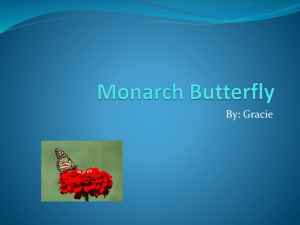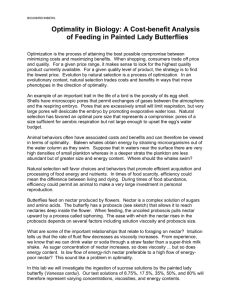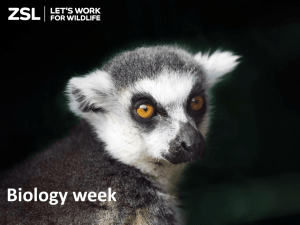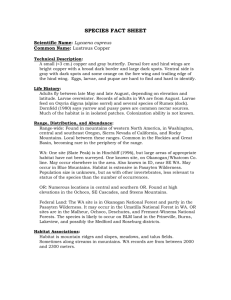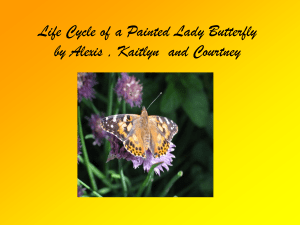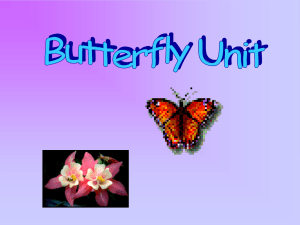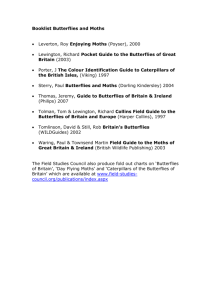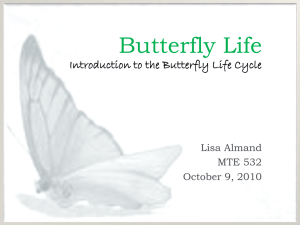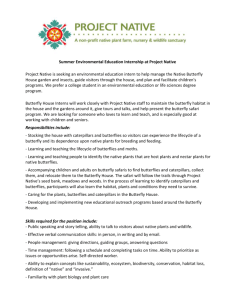BUTTERFLIES: Adults
advertisement
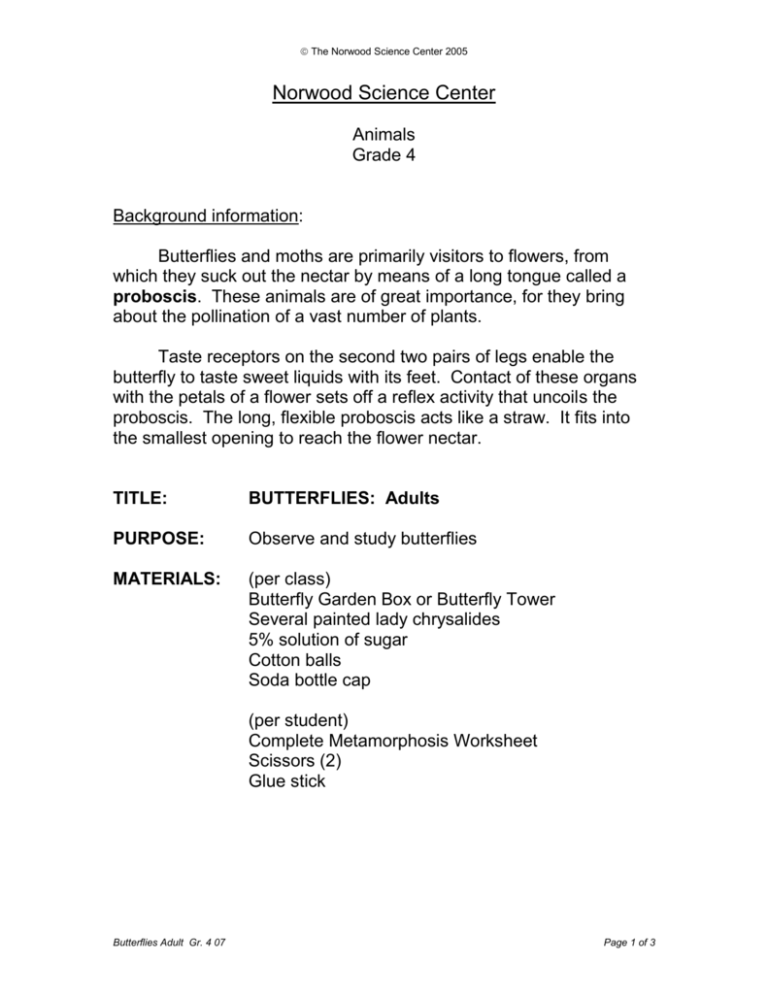
The Norwood Science Center 2005 Norwood Science Center Animals Grade 4 Background information: Butterflies and moths are primarily visitors to flowers, from which they suck out the nectar by means of a long tongue called a proboscis. These animals are of great importance, for they bring about the pollination of a vast number of plants. Taste receptors on the second two pairs of legs enable the butterfly to taste sweet liquids with its feet. Contact of these organs with the petals of a flower sets off a reflex activity that uncoils the proboscis. The long, flexible proboscis acts like a straw. It fits into the smallest opening to reach the flower nectar. TITLE: BUTTERFLIES: Adults PURPOSE: Observe and study butterflies MATERIALS: (per class) Butterfly Garden Box or Butterfly Tower Several painted lady chrysalides 5% solution of sugar Cotton balls Soda bottle cap (per student) Complete Metamorphosis Worksheet Scissors (2) Glue stick Butterflies Adult Gr. 4 07 Page 1 of 3 The Norwood Science Center 2005 PROCEDURE: 01. When the chrysalis is 7-10 days old, it will darken and its wing colors will begin to show. The adult will emerge within 12-24 hours. The upper surface of the body and wings of the adult butterfly is mostly black, brown, and orange. There are also some white spots and red and blue markings. The underside of the adult is gray with white and red markings. 02. Point out to students that moths undergo changes similar to those of butterflies with one main difference – moths form a cocoon instead of a chrysalis. 03. Explain to the class that since the life cycle of the butterfly involves four stages it is called complete metamorphosis. 04. Once the adults have emerged, place one cotton ball in the soda bottle cap and saturate the cotton with the 5% sugar solution. Place the cap on the floor of the box or tower. 05. You may also wish to place leaves, stems or seedlings of mallow or hollyhock in the butterfly cage. 06. Have the students use magnifiers to observe the adults through the windows or screening of the cage. Ask students to find the following body parts: two pairs of wings, three pairs of jointed legs, compound eyes, head, proboscis and antennae. 07. Students should observe how the butterflies react to the food and use their proboscis to drink the sugar-water. CONCLUSION: 01. Distribute one Complete Metamorphosis worksheet, glue stick and pair of scissors to each student. 02. Students should cut out the picture of each stage of complete metamorphosis and glue the picture in the correct location on the worksheet. SOURCE: 01. Butterflies and Moth. Delta Science Module, Nashua, NH, 1988. Butterflies Adult Gr. 4 07 Page 2 of 3 The Norwood Science Center 2005 Butterflies Adult Gr. 4 07 Page 3 of 3

